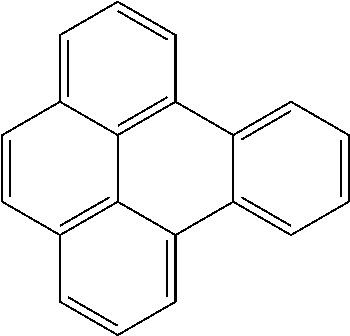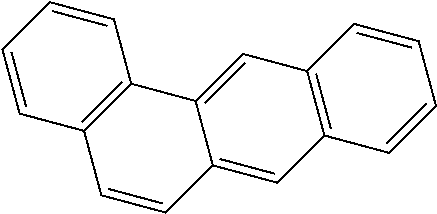Sequestering polycyclic aromatic hydrocarbons in asphalt
a technology of aromatic hydrocarbons which is applied in the field of sequestering polycyclic aromatic hydrocarbons in asphalt, can solve the problems of unavailability of organic bioaccumulation and polycyclic aromatic hydrocarbons, and achieve the effect of reducing the level of free polycyclic aromatic hydrocarbons and reducing the risk of human and environmental impa
- Summary
- Abstract
- Description
- Claims
- Application Information
AI Technical Summary
Benefits of technology
Problems solved by technology
Method used
Image
Examples
example 1
[0031]Activated carbon was added to industrial oxidized asphalt having a ring and ball (R&B) softening point of 100° C. The asphalt was heated to a temperature of 450° F.-470° F. (232° C.-243° C.) with continuous stifling under a nitrogen purge. Activated carbon was added and the blend was stirred for 240 minutes at 450-470° F. (232° C.-243° C.) under a continuing nitrogen purge. During the stirring, samples were taken at time intervals of 0 minutes, 5 minutes, 30 minutes, 60 minutes, 120 minutes, and 240 minutes and tested for free Benzo(a)pyrene.
[0032]
Formulations and Properties123456Oxidized Asphalt1009090909090Activated Carbon01010101010Mixing Time (min)053060120240Free Benzo(a)Pyrene0.580.390.380.260.180.14*Activated Carbon, WPH, available from Calgon Carbon.
example 2
[0033]Activated carbon was added at various levels to industrial O-PEN asphalt having a R&B softening point of 95° C. The asphalt was heated to a temperature of 450-470° F. (232° C.-243° C.) with continuous stifling under nitrogen purge. Activated carbon was added and the blend was stirred for four hours at 450-470° F. (232° C.-243° C.) under a continuing nitrogen purge. After four hours the mixture was cooled and tested for free Benzo(a)pyrene.
[0034]
Formulations and Properties12340-PEN Asphalt100959085Activated Carbon051015Free Benzo(a)Pyrene1.50.730.280.04*Activated Carbon, WPH, available from Calgon Carbon.
example 3
[0035]Activated carbon was added to industrial O-PEN asphalt having a R&B softening point of 74° C. The asphalt was heated to a temperature of 450-470° F. (232° C.-243° C.) with continuous stirring under nitrogen purge. Activated carbon was added and the blend was stirred for four hours at 450-470° F. (232° C.-243° C.) under nitrogen purge. After four hours the mixture was filtered to remove the residual activated carbon, cooled and tested for free Benzo(a)pyrene.
[0036]
Formulations and Properties120-PEN Asphalt10090Activated Carbon010Free Benzo(a)Pyrene4.41 3.08*Activated Carbon Carbsorb 30, available from Calgon Carbon.
Description of “Free Benzo(a)pyrene”
[0037]Free Benzo(a)pyrene was determined in Examples 1-3 by Southwest Research Institute (SwRI) using a GC / MS (gas chromatograph / mass spectrometer) with isotope dilution. The method was presented at IRC (international rubber conference) 2008, in Kuala Lumpur, Malaysia, IRC 2012 on Jeju Island, Korea, and German Rubber Conference 20...
PUM
| Property | Measurement | Unit |
|---|---|---|
| temperature | aaaaa | aaaaa |
| softening point | aaaaa | aaaaa |
| temperature | aaaaa | aaaaa |
Abstract
Description
Claims
Application Information
 Login to View More
Login to View More - R&D
- Intellectual Property
- Life Sciences
- Materials
- Tech Scout
- Unparalleled Data Quality
- Higher Quality Content
- 60% Fewer Hallucinations
Browse by: Latest US Patents, China's latest patents, Technical Efficacy Thesaurus, Application Domain, Technology Topic, Popular Technical Reports.
© 2025 PatSnap. All rights reserved.Legal|Privacy policy|Modern Slavery Act Transparency Statement|Sitemap|About US| Contact US: help@patsnap.com



